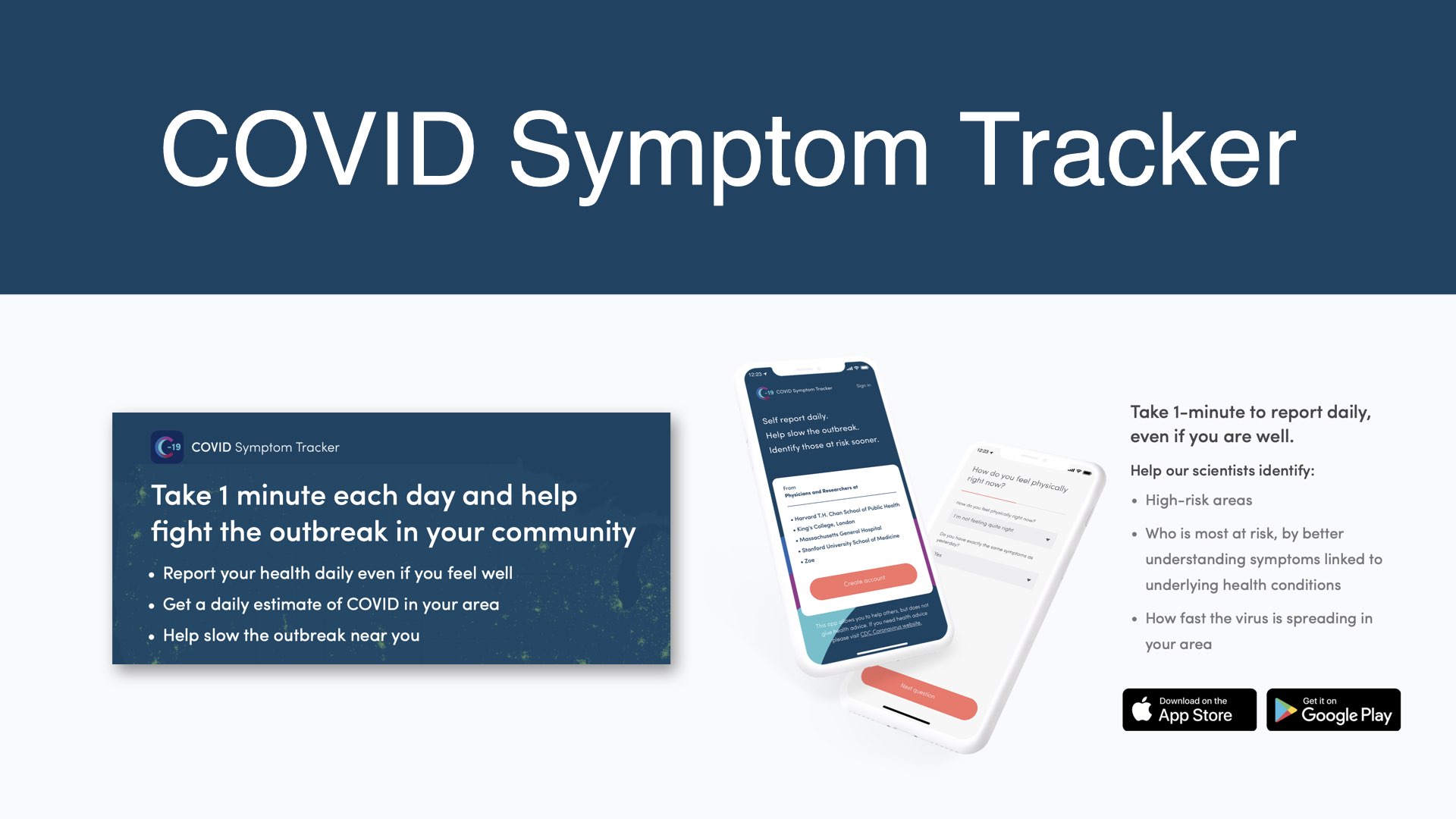The COVID Symptom Tracker is an app to help scientists and medical professionals study and limit the spread of COVID-19 (the Coronavirus). The data gathering is part of a non-profit initiative supported by a consortium of healthcare researchers and providers.
How It Works
Here’s how the COVID Symptom Tracker app works:
- GIVE. In one minute per day, report your health even if you feel well.
- GET. In exchange, you’ll get a daily estimate of COVID in your area, helping you slow the outbreak in your community.
Get The App
The app is available for iPhone and Android smartphones. Get the app using the appropriate link below.
- iPhone – Apple iOS App Store
- Android – Google Play Store
About The Developers
The COVID symptom tracker was created by doctors and scientists at Massachusetts General Hospital, the Harvard T.H. Chan School of Public Health, King’s College London and Stanford University School of Medicine, working codeveloped with ZOE – a health science company.
[Source: COVID Symptom Tracker / About]
Scaleable and Proven
This app was built in the US to support the Nurses’ Health Study. This is one of the largest and longest-running scientific studies in the world with 280,000 participants stretching back to 1976. Many participants in the Nurses’ Health Study are still active healthcare workers who are treating people with COVID across the country and risking their own health to help us. The app is now available to anyone in the US or UK who wants to help.
[Source: COVID Symptom Tracker / About]
Goals and Outcomes
This research aims to help scientists understand COVID-19 , with the following specific aims:
- Better understand the symptoms of COVID-19
- Understand how fast the virus is spreading in your area
- Identify high-risk areas in the country
- Identify who is most at risk by better understanding symptoms linked to health conditions
- Identify the exposure of healthcare workers to COVID-19
- In the future, we hope we will be able to use this data to help health services support sick individuals. This app is not intended to be a diagnostic tool. For official advice about the coronavirus please visit the CDC website
